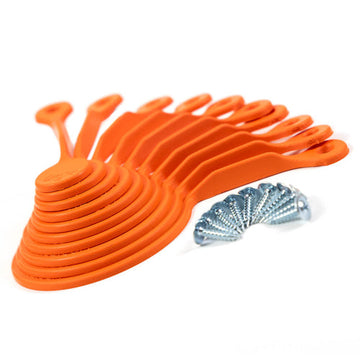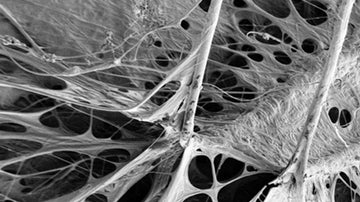Question: What do spiders and slingshots have in common?
Answer: They both use elastics.
A new study has shown that spiders use their webs not only to trap their prey but also to catapult them up into the web. See, turns out spider silk has more elasticity than once thought.
And it turns out that spiders wisely use their webs not only to trap their prey but to launch their prey farther up into the web.
See article: Spiders Weave Catapult-Like Mechanisms Into Their Webs to Hoist Unwieldy Prey
We love this kind of stuff because understanding latex is at the heart of understanding slingshots.
Latex works on one simple factor: elasticity and retraction.
So when you stretch latex, the small pores in the latex expand allowing elasticity. However, those pores want to return to their normal size, causing retraction. All good latex has strong retraction properties which give it power to launch projectiles.
Check out these photos comparing close-ups of latex and spider silk.


The red dot on the photo of latex shows the poor area that opens and stretches causing elasticity. Remember, it is that pore's memory to come back to its normal size that causes retraction.
Then check out the close-up of spider silk. It's slam full of that same open area that causes expansion and retraction.
If you've ever researched spider silk at all, you are probably already impressed. Now, do you have even more reason to be impressed.
Turns out, spiders are catapult scientists!












